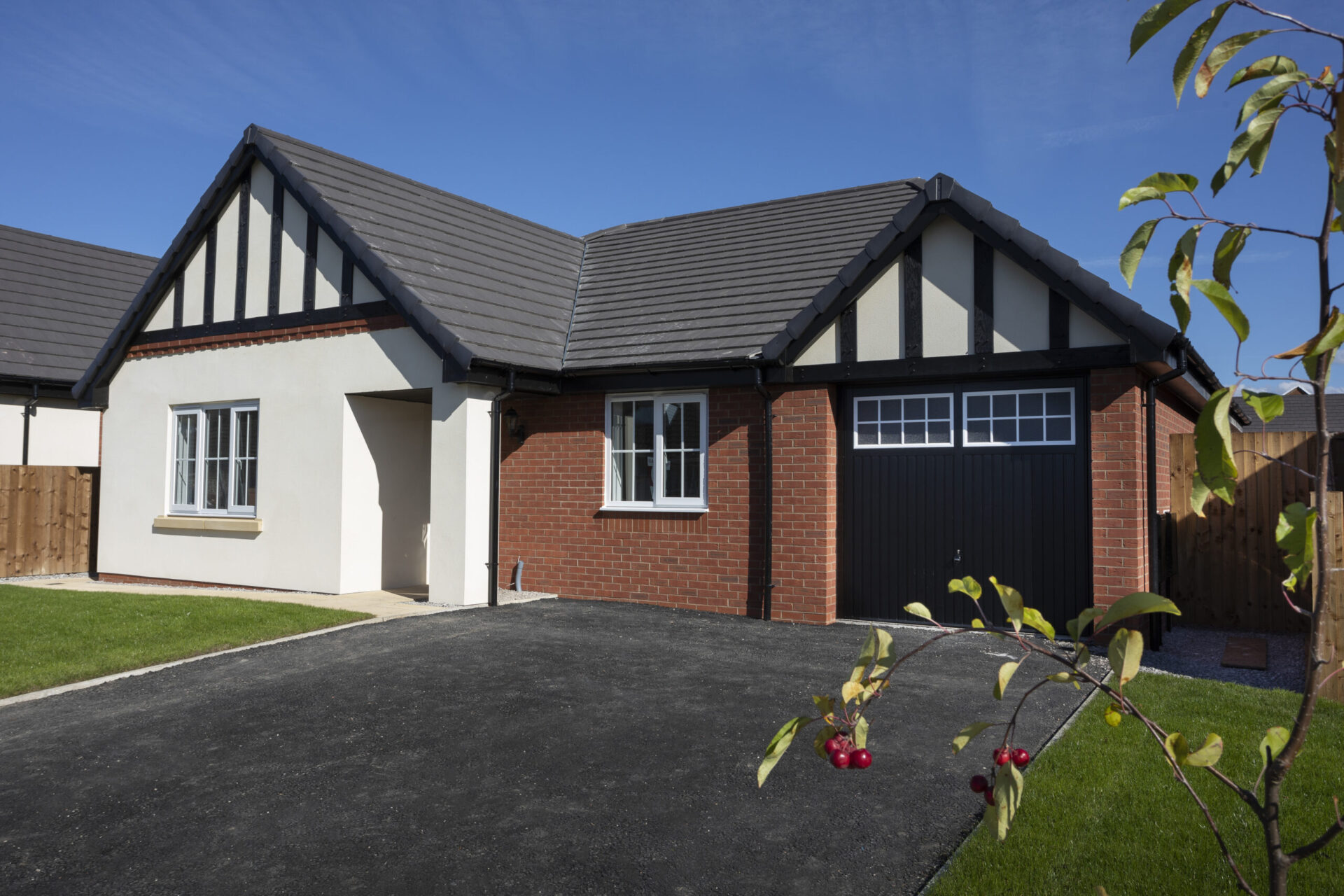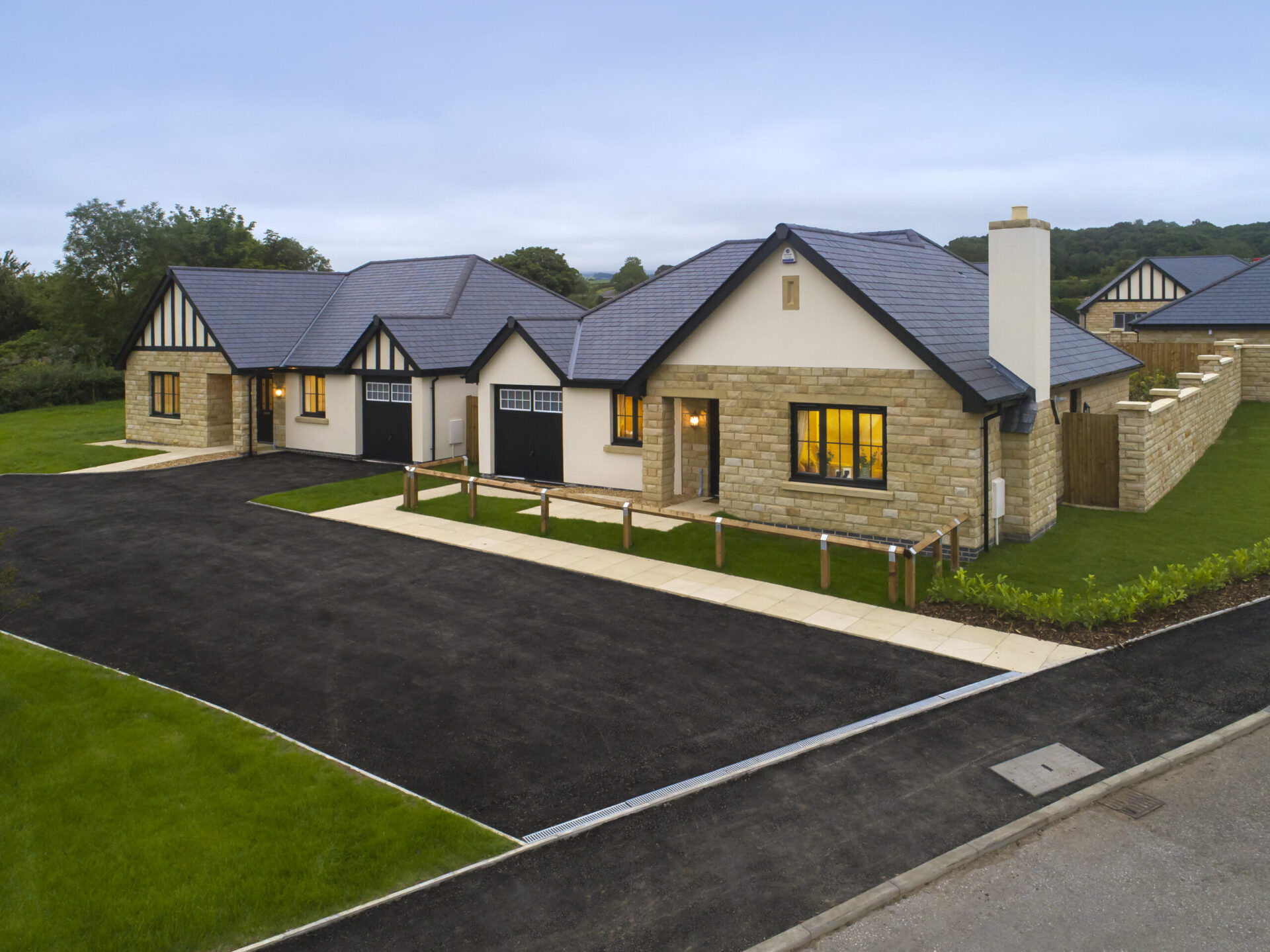Nearly 20 years on from Peter Kay’s tour, bungalows remain a highly popular housing choice among older people yet the number being built each year has plummeted from nearly 30,000 in the late 1980s to below 2,000 in 2021, which is less than 1% of all new homes built in the UK last year.
This, perversely, is at the same time as when the UK is experiencing greater life expectancy and an increasingly ageing and growing elderly population; when demand for bungalows is increasing further as a result of the impact of lockdown on older people’s lifestyles and well-being; and when the Government tells us that the need to provide all forms of housing for older people is ‘critical’.
High-quality, modern bungalows built to accessible and adaptable lifetime standards are fully aligned with Government policy to widen choice and enable older people to live safely, independently and comfortably in their homes for as long as possible. The benefits over two-storey houses are obvious:
- Many older people prefer to live on one level to suit their needs
- Single level living is safer and reduces the risk of falls and critical accidents
- Single level living can reduce illness, social isolation, loneliness and depression
- Single level accommodation is easier to maintain

Image: Applethwaite Ltd
There are also secondary benefits. It is widely recognised that the lack of bungalows is a key barrier to older households releasing equity and downsizing which frees up under-occupied properties to help meet the younger generation market and affordable housing needs. And, enabling older people to live independently, safe and healthy for as long as possible, reduces pressure and has cost savings for social care and health systems.
To be fit for purpose, however, bungalows must be attractive to the market. The needs of older people in 2021 are different from previous generations and their aspirations around housing and maintaining independent lifestyles, have changed dramatically. Research by the NHBC and the Housing Learning and Improvement Network confirms that people over 55 are motivated by the same desires as younger age groups and many remain economically active. Older people require homes with more amenities, a private garden, car parking and space for pets, hobbies, storage, visiting family and friends and looking after grandchildren and ‘sleepovers’. Whereas a typical two-bedroom retirement apartment within a managed communal setting cannot accommodate this lifestyle, a high-quality modern bungalow can.
Why can’t “mum” find a bungalow?
Quite simply, it is because bungalows are far less profitable to build than houses due to the competition for land which has intensified as house prices have risen and the national housing crisis has progressively worsened over the last 30 years. A landowner will require the same asking price for their land regardless of whether a bungalow or house will be built, but compared to two-storey houses, the sales yield from bungalows is lower due to less site coverage and floor space, and development costs are higher (in real terms) without the economy of first-floor accommodation.

Image: Applethwaite Ltd
Are local planning authorities helping “mum”?
Not really. Although it is usually a combination of misconceived but well-intended local policies and a general misunderstanding of older people’s requirements, aspirations and motives for choosing a home, which works against large scale bungalow development. The main obstacles are;
- Inflexible planning policies – minimum density requirements which favour mainstream housing development and apartments, and/or planning obligation requirements (i.e. affordable housing) which make bungalow development financially unviable;
- Local Plan evidence base – studies that pre-date the 2019 definition of older people only assess the housing needs of the over 65s and not people approaching retirement age (i.e. over 55s). They forecast needs for more specialist housing (e.g. sheltered accommodation, extra care and care home bed-spaces) but are often silent on the amount and mix of the types of general housing which is required to meet the needs of older people choosing to live independently and safely in their own home for as long as possible;
- Adapted housing policies – these typically require a percentage of dwellings in mainstream housing schemes to be made suitable for occupation by older people. Some require dwellings to be adapted to lifetime home and/or Part M4(2) building regulation standards, but it remains the case that an adapted two-storey house cannot match the benefits of single-level accommodation provided by a purpose-built bungalow, and will be less appealing to older people;
- Housing mix policies – these require a percentage of bungalows to be provided in mainstream housing schemes for older people. Housebuilders are often only willing (and able) to provide the minimum number of bungalows however, built to minimum size and space standards, and often provided only as part of the affordable housing provision and not for private sale. They are also often provided in small numbers and sometimes spread (‘pepper potted’) in isolated locations. These types of bungalows do not meet the majority of older people’s needs;
- Existing stock – there are also instances when despite having Local Plan policies which require the provision of general needs housing for older people, some local planning authorities resist new bungalow development because they consider they already have sufficient stock. This shows a flawed understanding of older people’s needs and the benefits of bungalows.
The consequence of the above hurdles is that Local Plans do not deliver the full range of special housing for older people which is required to meet their diverse needs despite clear Government policy to the contrary. Consequently, many older people will prefer to continue living in their current unsuitable homes and meaning that demand is suppressed and needs are unmet.
Who can help “mum” find a bungalow?
Developers who specialise in age-restricted bungalows for older people are able to develop small schemes under ten plots as they do not attract affordable housing and planning obligation tariffs, and so are financially viable. They are in short supply and high demand however and often with price premiums.
To provide the opportunities which are needed to make large scale / higher volume bungalow development commercially viable again, specialist retirement and older people’s housing developers are lobbying the Government for changes to the planning system. Three quite simple changes will make a very tangible difference:
- National planning policy – clarification and/or revision to confirm that developments of age-restricted specialist bungalows for older people are exempt from providing affordable housing;
- Flexible local planning policies – recognising that strict application of density and/or planning obligation (i.e. affordable housing) requirements prevent bungalow schemes from being developed and that the benchmark land value for bungalow development is the same as two-storey housing;
- Allocating land – specific site allocations in Local Plans and Neighbourhood Plans for age-restricted specialist bungalows for older people will enable developers to buy land without competition from mainstream housebuilders. These could be standalone or a part of larger allocations and strategic sites.
With relatively little intervention and a better understanding of the factors which influence older people’s housing choices, the benefits of bungalows and land economics and viability, there is no reason why greater numbers of bungalows cannot be built.
I’ll let Peter know.
For more information or help with older people’s housing projects, please contact Graham Love, email
graham@smithlove.co.uk





